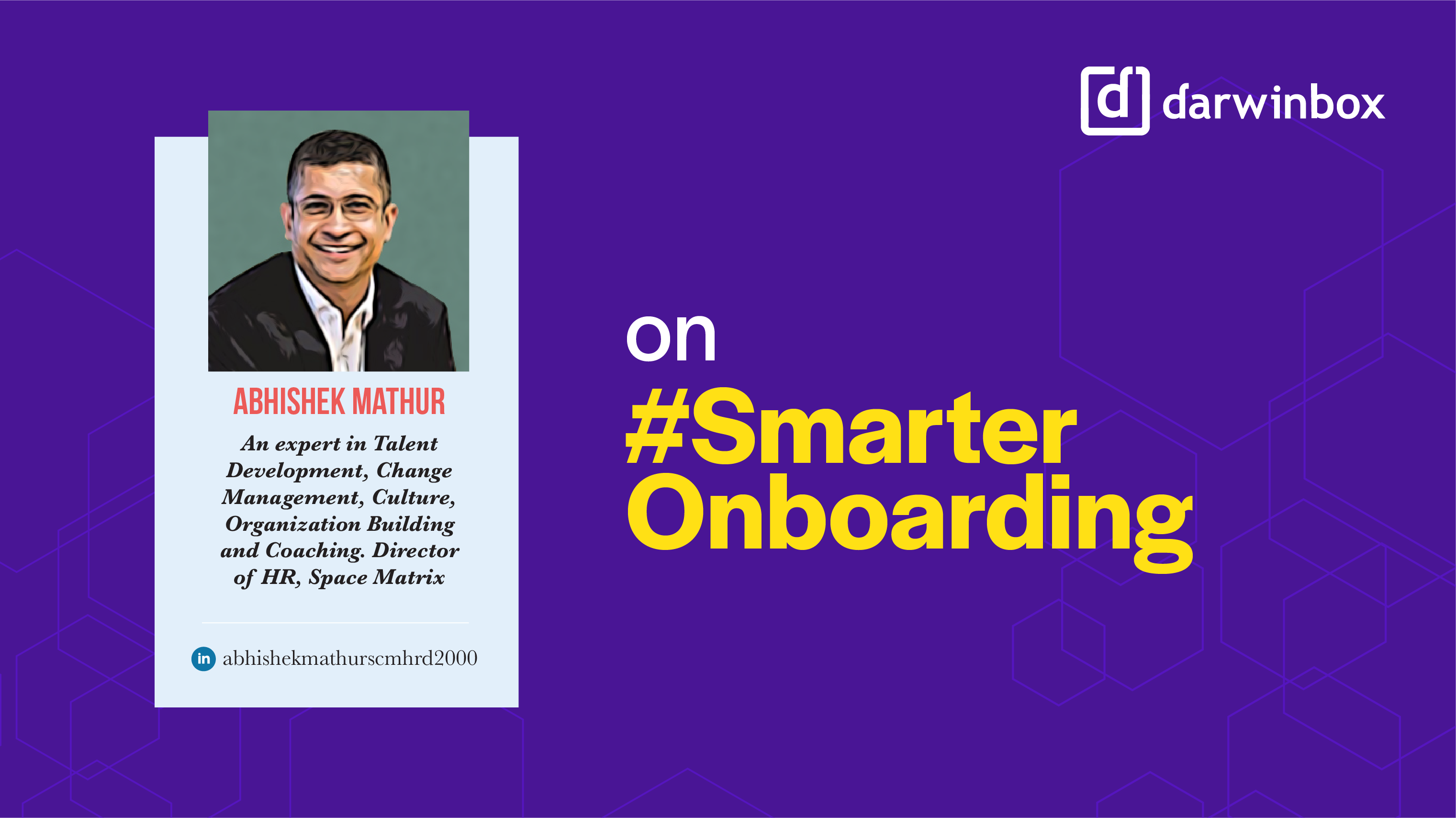

“You only get one chance to make a first impression.”
This old sales axiom perfectly describes the importance of effective, efficient onboarding processes. While recruiting and interviewing introduces new employees to their future bosses and coworkers, onboarding is the first major introduction to the company as a whole.
However, many companies approach onboarding as something that stops “when all the paperwork is signed and the employee’s first day is complete.” How employers handle the first few days and months of a new employee’s experience is crucial.
In this interview with Abhishek Mathur, Director of HR, Space Matrix shares how his company shifted from traditional to a digital onboarding programme for achieving better engagement and greater productivity with a new-age, intuitive HR tech solution, Darwinbox.
Q1. What is the importance of onboarding in your organization’s talent management strategy? What do you plan to achieve out of your onboarding program?
Onboarding plays the role of the last mile connectivity in our Talent Management strategy. An organization can do all the right things to attract the best talent, but if they are unable to integrate them within the organization, the chance for the new employee to get disillusioned, disengaged and eventually leave becomes high. A great onboarding program should be able to help integrate a new employee in a seamless manner, thereby helping them to become productive for the organization faster than anyone else.
Q2. What are the challenges that you faced with the new hire’s assimilation into the company? How were these affecting the HR team and the newly onboarded talent?
The biggest challenge in new hire assimilation was to get business ownership. Like most traditional organizations, onboarding was seen as something that is the responsibility of the HR function. Due to this mindset, while HR was doing basic on-boarding, because of lack of ownership from the business, the new joinees were left very clueless about what they should be looking forward to in the organization. They also felt a huge mismatch with what was told about the culture of the organization versus what they experienced at the time of hiring.
This resulted in a spike of early attrition (0-6 months), which put further burden on the HR teams to hire more as well as to manage the conversations that should have been done by the managers.
Q3. Often new hires complain about unnecessary paperwork and a lot of transaction processes during the onboarding program on their first day. How do you manage this situation?
After the launch of our onboarding process through Darwinbox, the time spent by the new employee managing paperwork has drastically come down. As part of the pre-onboarding process, the new employee would have filled all the necessary personal details online, which resulted in the paperwork already ready on “Day 1” and mere signatures that are required. The system also helps intimate the relevant functions like Admin, IT, etc. to prepare the required ID’s, seating, laptops etc. for the employee and hence the employee does not have to spend time on such transactional activities on Day 1.
Q4. As a multinational organization, how does your process help your central team track and ensure a consistent experience across all countries?
With this process, we have been able to assign the “one day” in a week for all our onboarding activities. The auto triggers to the respective central teams give them enough turn around time to be prepared for the new joinees, thereby avoiding any unforeseen situations.
Q5. How did you enable your team to move from traditional onboarding program to digital onboarding program?
The team was pushing us to come out of the manual process and use technology. However, we wanted to use a technology which is intuitive and has customizable workflows that can cater to the specific needs of our organization. As part of the change management, the team that was responsible for launching the onboarding module comprised of members from our business, HR operations, Admin and IT functions. They all had the input in customizing the workflows in order to make the process efficient. This brought in ownership as well as the pride in delivering a solution.
Q6. What kind of impact have you observed due to the digitized onboarding program on attrition, engagement, and performance of new hires as compared to the time with unstructured onboarding?
Honestly, it's still early days for us to measure any significant impact on metrics like early attrition or performance, as it has been only six months that we have implemented this module. One metric that has seen significant increase is the employee experience towards our onboarding which we measure through a survey. The positive experience scores have seen an increase of 23 percent for the set of 80 new hires in the last six months.
Q7. What kind of differences have you observed between the paper-based and digital onboarding? How much has it impacted the efficiency of the overall onboarding program?
The advantages of using a digital onboarding platform are the ease with which we can manage information across different functions. This has had a huge impact on the efficiency as now there are minimal defects with regards to readiness to onboard an employee. It also helps the various functions involved plan their schedules better since there is a designated day for onboarding.
Q8. What are the future ambitions or changes you have in mind for your organization’s onboarding process?
The way I see the future of onboarding is where we have a seamless app. An app that allows candidates to complete all their pre-onboarding formalities, know where their workplace is assigned, and other compliance activities. The app should also enable the other stakeholders who are onboarding new employees. For e.g. via the app, the IT team can set up a laptop before the joining of a candidate, as they have the required information. The meeting with the manager, HR teams and the buddy have been pre-booked in the calendar and the meeting rooms have been pre-booked through the app. The list of the KRA’s that have been agreed are uploaded through the app, into the performance management system, and regular feedback is scheduled through the app as well.
HR makes the best first impression by finishing all transactions ahead of time, thereby, accelerating the new hire’s productivity - because they have everything they need to hit the ground running right from day zero. It allows HR to make the new hires a part of the company's culture right, put their time to best use, and ensure there is no loss in efficiency due to the transactional pieces not being in place. Thus, smarter onboarding is all about going digital by choosing a new-age HRMS platform that can support all your employee onboarding needs!



Speak Your Mind